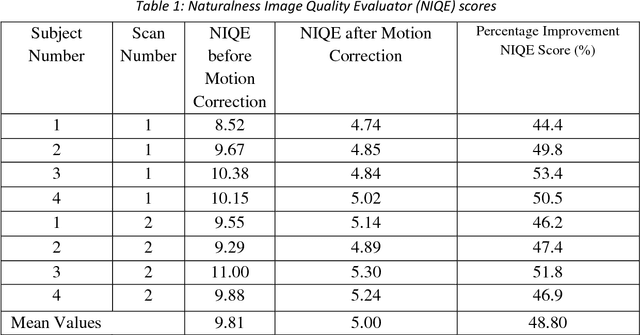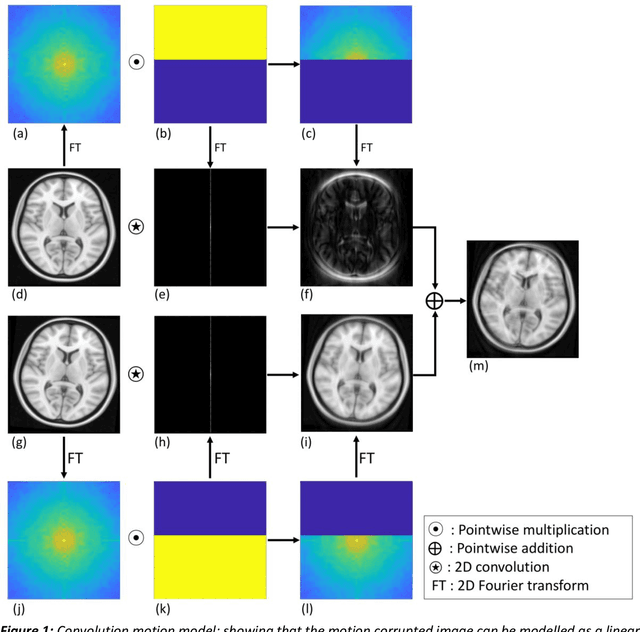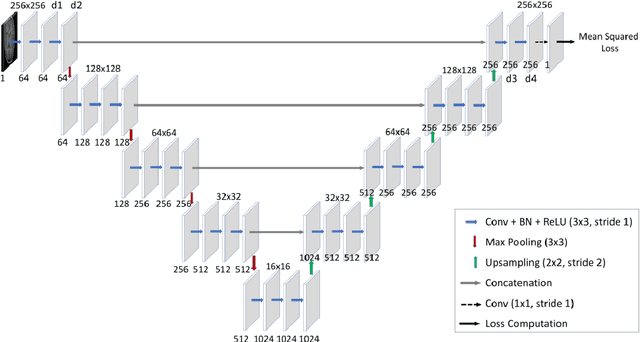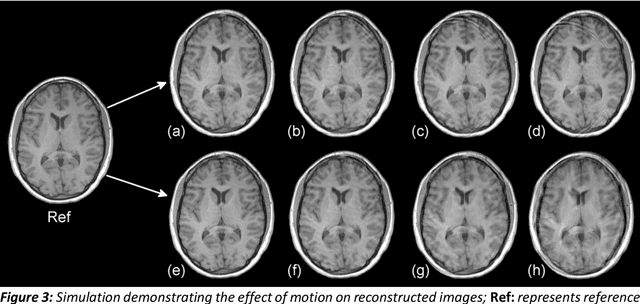MoCoNet: Motion Correction in 3D MPRAGE images using a Convolutional Neural Network approach
Paper and Code
Jul 29, 2018



Purpose: The suppression of motion artefacts from MR images is a challenging task. The purpose of this paper is to develop a standalone novel technique to suppress motion artefacts from MR images using a data-driven deep learning approach. Methods: A deep learning convolutional neural network (CNN) was developed to remove motion artefacts in brain MR images. A CNN was trained on simulated motion corrupted images to identify and suppress artefacts due to the motion. The network was an encoder-decoder CNN architecture where the encoder decomposed the motion corrupted images into a set of feature maps. The feature maps were then combined by the decoder network to generate a motion-corrected image. The network was tested on an unseen simulated dataset and an experimental, motion corrupted in vivo brain dataset. Results: The trained network was able to suppress the motion artefacts in the simulated motion corrupted images, and the mean percentage error in the motion corrected images was 2.69 % with a standard deviation of 0.95 %. The network was able to effectively suppress the motion artefacts from the experimental dataset, demonstrating the generalisation capability of the trained network. Conclusion: A novel and generic motion correction technique has been developed that can suppress motion artefacts from motion corrupted MR images. The proposed technique is a standalone post-processing method that does not interfere with data acquisition or reconstruction parameters, thus making it suitable for a multitude of MR sequences.
 Add to Chrome
Add to Chrome Add to Firefox
Add to Firefox Add to Edge
Add to Edge